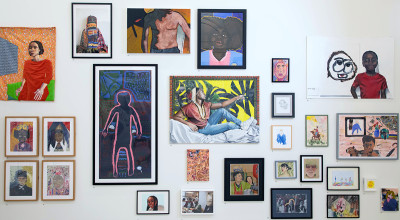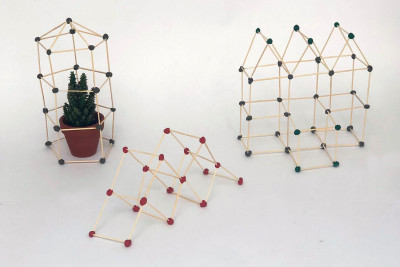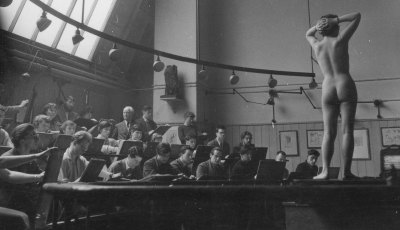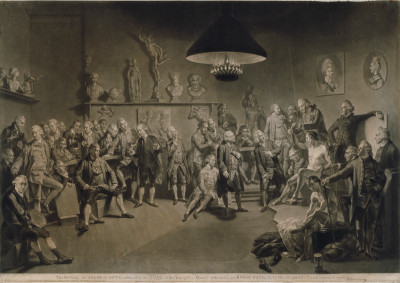Accessing art: SEN family workshops
Accessing art: SEN family workshops
By Claire Madge
Published 14 July 2014
Claire Madge observes a family SEN (Special Educational Needs) workshop at the RA.
-
I first heard about the RA’s programme for families with SEN needs through an comment on the Museums Journal website, made by Beth Schneider, Head of Learning at the Royal Academy of Arts. The article was on ‘Welcoming Autistic Visitors’ and featured case studies of museums working to make their venues less intimidating for people with autism. Historically, the RA is not the first place that comes to mind when I think of family-friendly places, let alone SEN friendly, so I came to observe one of their weekend workshops for families with children with special educational needs to find out more.
After a warm welcome, I met Cash Aspeek, the artist who was leading the two-hour session. She filled me in on how the sessions work: numbers are kept low (there were seven families booked at the workshop I observed) with around 20 people attending and supported by several volunteers. The theme of today’s event was creating thrones to mirror the opulence of the John Madejski Fine Rooms where the workshop is based. Previous sessions have engaged families with architecture; last year one event was inspired by El Anatsui’s large-scale sculpture that hung on the front of the building during the Summer Exhibition. There is no cut off in terms of age or ability, everyone is welcome.
I was introduced to a couple of families before the session started. Some have been before, for others this is a new experience, yet what comes across immediately is that this environment is friendly, supportive and non-judgemental – they are all in the same boat. I talked to one mother (an artist) whose son has West Syndrome, a form of epilepsy. Unable to talk or walk, he was happily lying on the floor enjoying the space, looking up at the gilded ceiling glinting above him. No one minds or tries to move him. His mum tells me that for her and her son, art is a way to express themselves. Another father, whose youngest daugher has Rhett Syndrome, explains that he wants his family to enjoy activities together, but this involves a lot of forward planning, and occasionally negative stares and comments. I began to understand what these families have come here for, why these session are important.
As the session started, a family arrived late but Cash gave them time to settle, not forcing them to join the initial welcome. This is a simple, often-overlooked act of flexibility that can make a real difference to a child who is unsure on first arrival. The families each took a chair and began to work with materials placed around the room: mirror foil, reflective, coloured film, large foam shapes wrapped in shiny foil, space blankets and sparkly jewels. I notice a baby sitting in the middle of a foil blanket mesmerised by the glint of light. I listen to the sounds of these materials, the scrunch and crackle. I can see this session is working so well because it is not just about creating, it is about engaging the senses, the touch and feel of materials, the way they look and (for some) even the way they taste. These marvellous creations take shape and I can’t stop myself from smiling at these thrones, a cross between space rockets and giant sweets, futuristic and fun, regal and royal.
-

SEN family workshop at the RA
-
I look up and notice a young girl, a blue crown adorning her pale blonde hair, pipe cleaner peaks of green, red, yellow and orange. Art has become the doorway to imagination, what began as something concrete and solid has transformed into something free. Photos are taken and the families are proud of their endeavours. A boy catches sight of himself in the mirror and laughs in pure delight at his transformed appearance. It is a beautiful moment.
Amongst all this, there is one boy who is not happy. His mum tells me he is tired. As I know from my own daughter, sometimes there are good days, sometimes there are bad days, and it doesn’t always matter how you much prepare, what you do and how you do it. That’s life, unfortunately, and these sessions do not act like a magic wand, but there is a quiet room for this boy to go into, and in this instance I think it helps. It is the flexibility of the space and session that gives parents and carers the room to breathe and work out what is best.
The children in this session all have different needs and different families, some have siblings and some do not. Inevitably, you can’t plan an event that removes everything that might cause a difficulty to some of the kids with higher SEN needs, but crucially the activity in this session is not about disability, it is about family involvement in art and creation. It is the surroundings and staff that make this work, the fact that numbers are kept low and that there is understanding and flexibility, no stares, comments or judgement. This is only the fourth event of its kind in this relatively new initiative at the RA, and I feel really privileged to have been welcomed into it.
When I talked to these families, not one of them moaned or complained about how hard and difficult it is coping with their children’s SEN needs, so I will do it for them. They love their children and want the best for them. To be able to attend an event like this, to come and spend an afternoon playing, creating and engaging as a family – I cannot find the words to express how important this is. There is massive need for these types of events, and I hope that other institutions can follow this example and run them, so that more families like these can experience a wonderful day, together.
The sessions are funded by Jeanne and William Callanan.
Claire Madge writes a blog about museums and accessible arts programmes, specifically creative programmes for children with autism. Find out more here.




